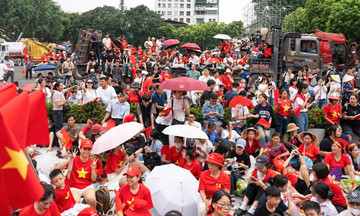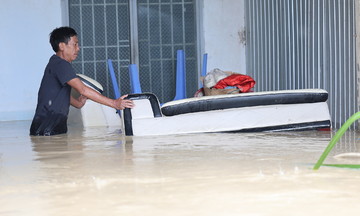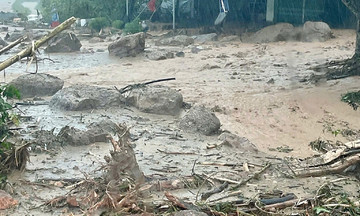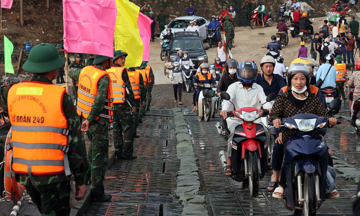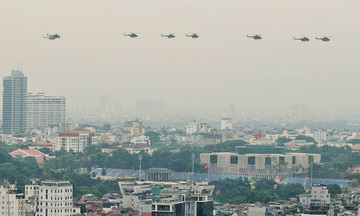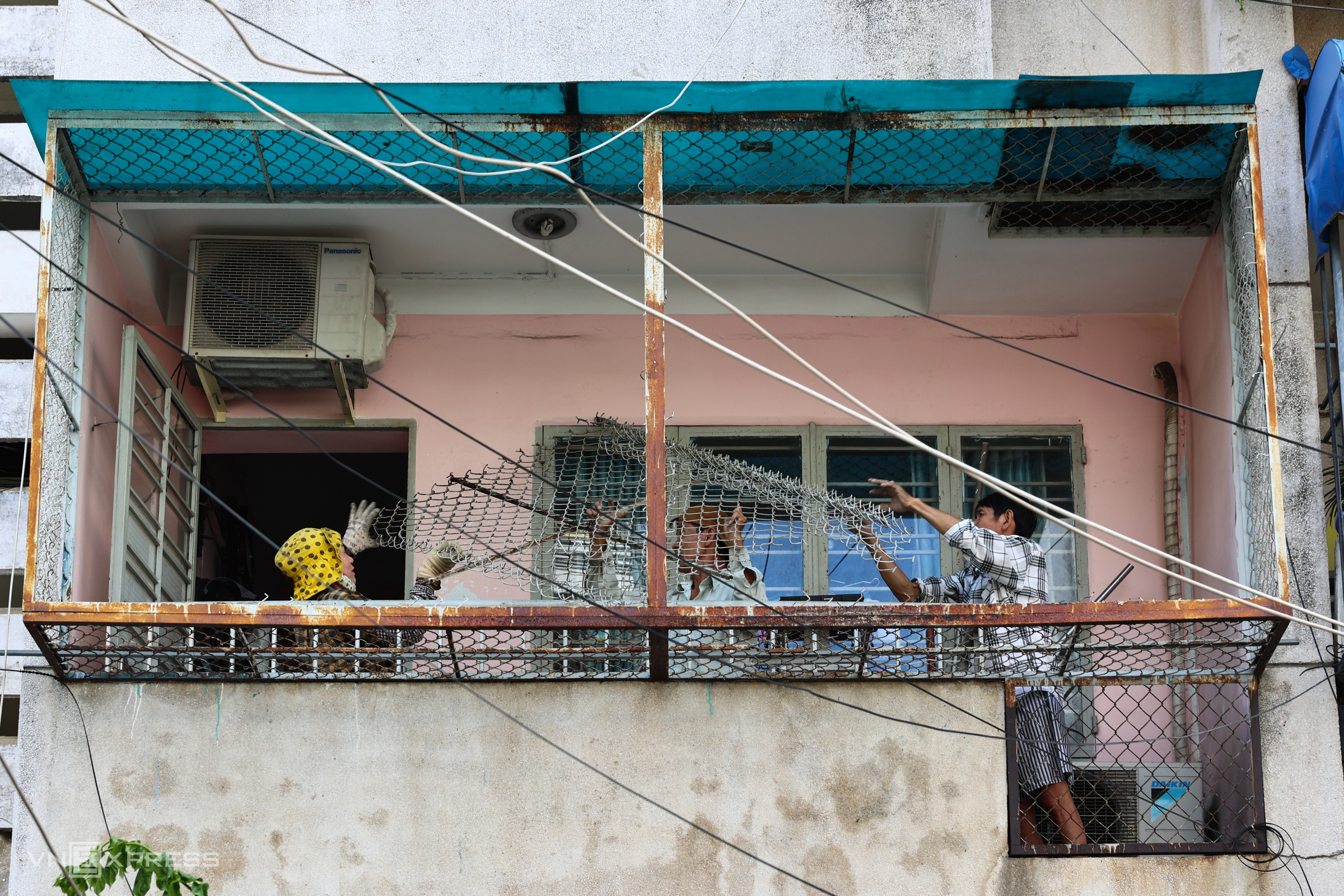 |
At a nearby apartment, a sturdy iron and steel fence completely enclosed the windows. Workers used hammers and cutting tools to dismantle this "tiger cage". Photo: Quynh Tran |
On the afternoon of 9/7, at a third-floor apartment in the Doc Lap complex on Do Doc Long Street, Phu Tho Hoa ward, a homeowner hired workers to cut down the steel frame and wire mesh that had enclosed their balcony for years. "The tragic fire made me realize the importance of escape routes, so I immediately dismantled the enclosure when the authorities encouraged us to do so," the homeowner said.
Nguyen Cong Chanh, chairman of the Phu Tho Hoa ward People's Committee (UBND), explained that the complex was built around 1997. Residents later added enclosures, often referred to as "tiger cages," to their upper-floor apartments. The ground floor units, originally designed with only main doors, also saw many residents adding fences and corrugated iron roofs. The ward has mandated the removal of these additions, requiring residents to restore their units to their original state by 10/7.
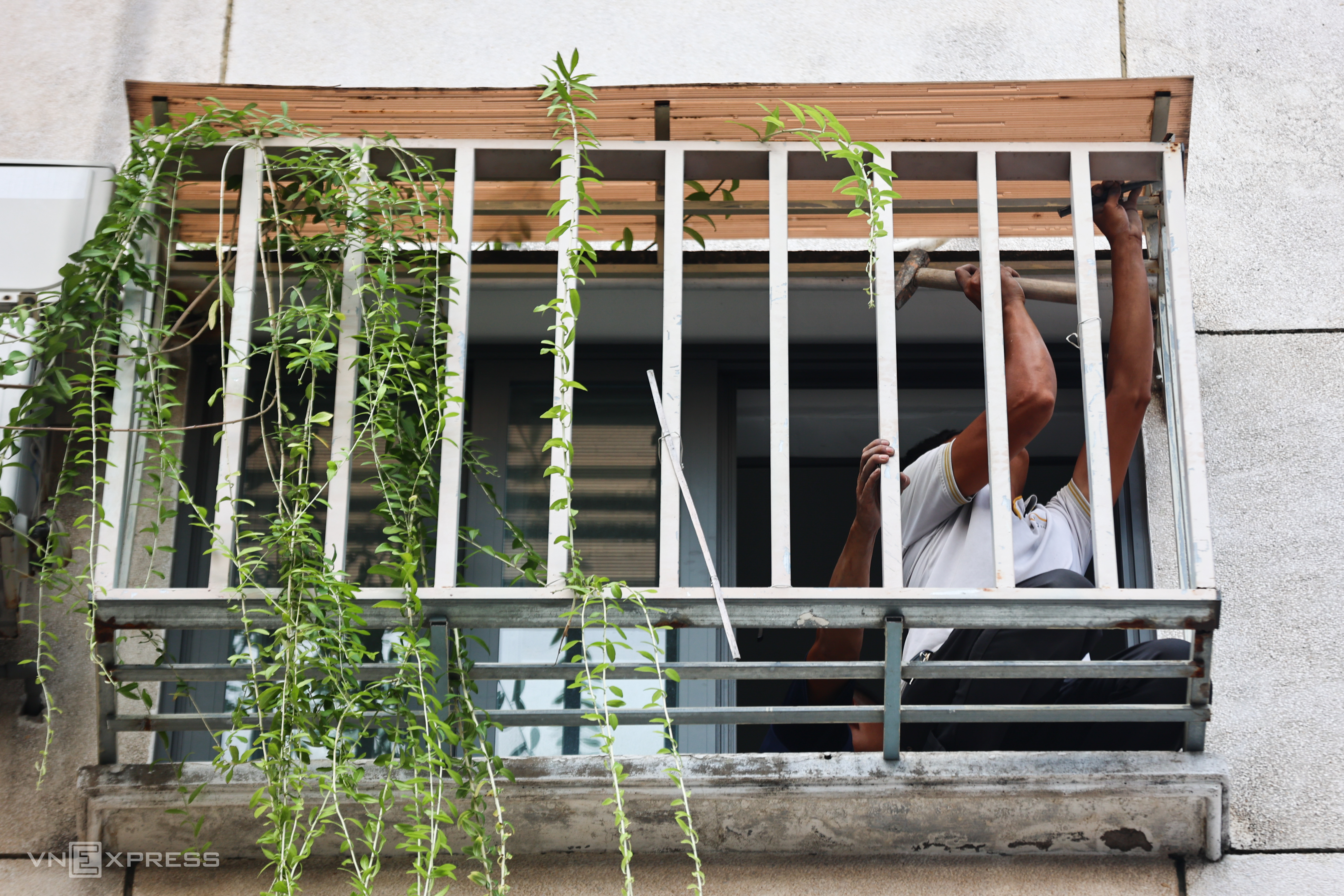 |
After about an hour, the steel frame was completely removed, restoring the original structure. Due to its bulkiness, workers had to transfer the metal frame to another apartment with a balcony to lower it to the ground. Photo: Quynh Tran |
At a nearby apartment, a sturdy iron and steel fence completely enclosed the windows. Workers used hammers and cutting tools to dismantle this "tiger cage". Photo: Quynh Tran
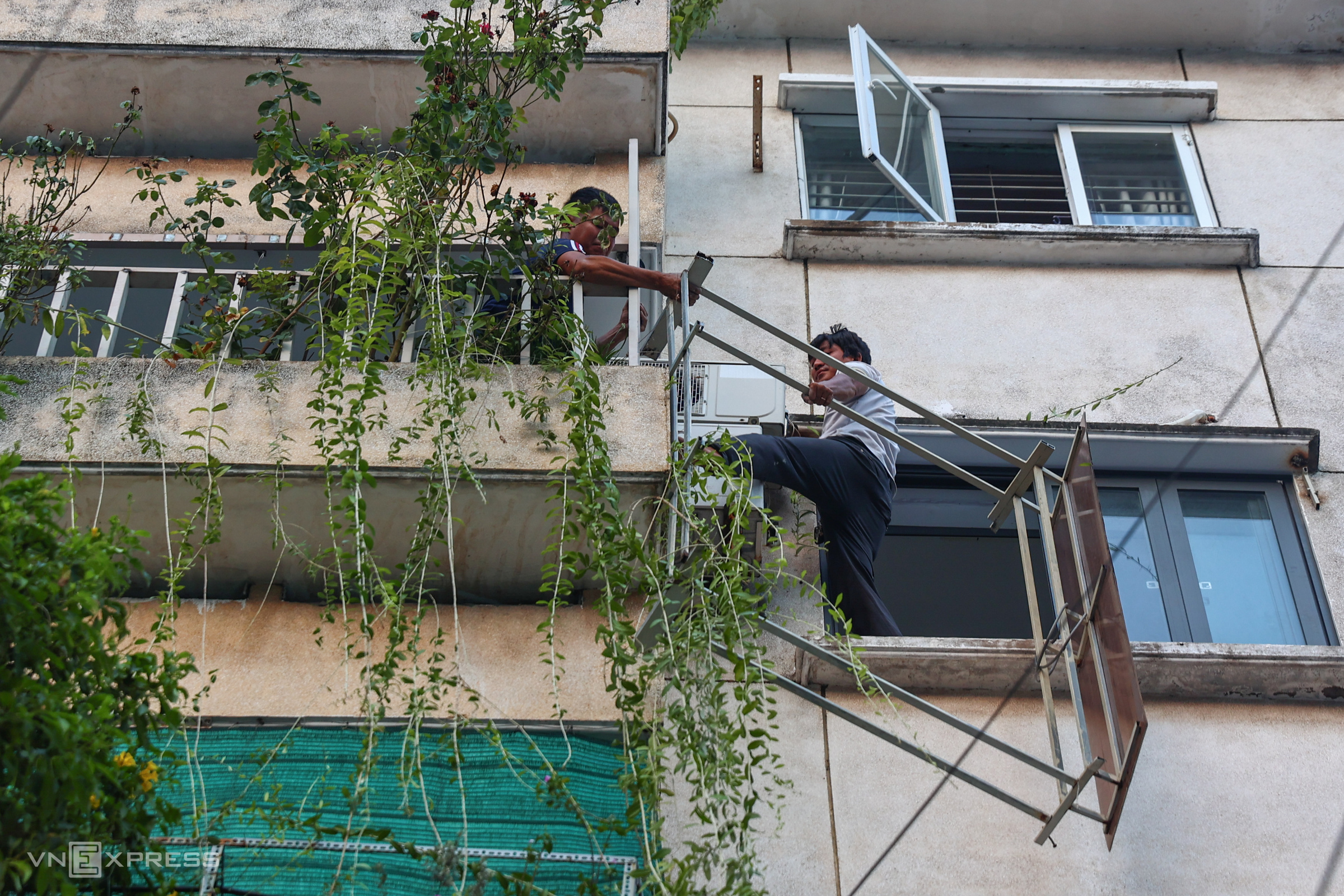 |
The wire mesh, steel, and corrugated iron were transported down to the complex's lobby. According to the building management, the complex has over 130 apartments, and approximately 80% of residents have already removed their enclosures and fences. Photo: Quynh Tran |
After about an hour, the steel frame was completely removed, restoring the original structure. Due to its bulkiness, workers had to transfer the metal frame to another apartment with a balcony to lower it to the ground. Photo: Quynh Tran
 |
A balcony, now open and airy, after the removal of the barrier. Photo: Quynh Tran |
The wire mesh, steel, and corrugated iron were transported down to the complex's lobby. According to the building management, the complex has over 130 apartments, and approximately 80% of residents have already removed their enclosures and fences. Photo: Quynh Tran
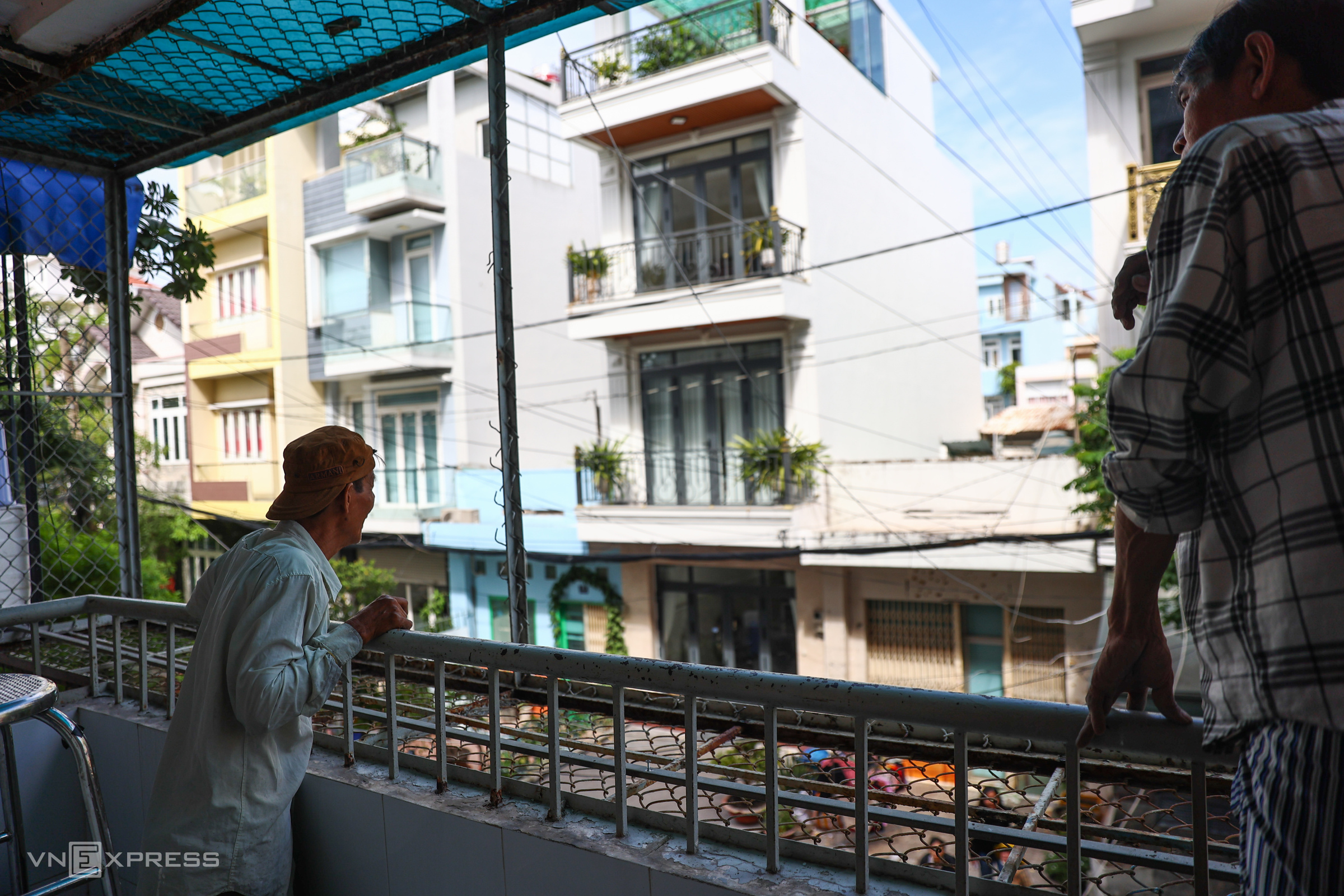 |
On the ground floor, numerous residents were also busy removing awnings and fences, restoring the complex to its original design. Photo: Quynh Tran |
A balcony, now open and airy, after the removal of the barrier. Photo: Quynh Tran
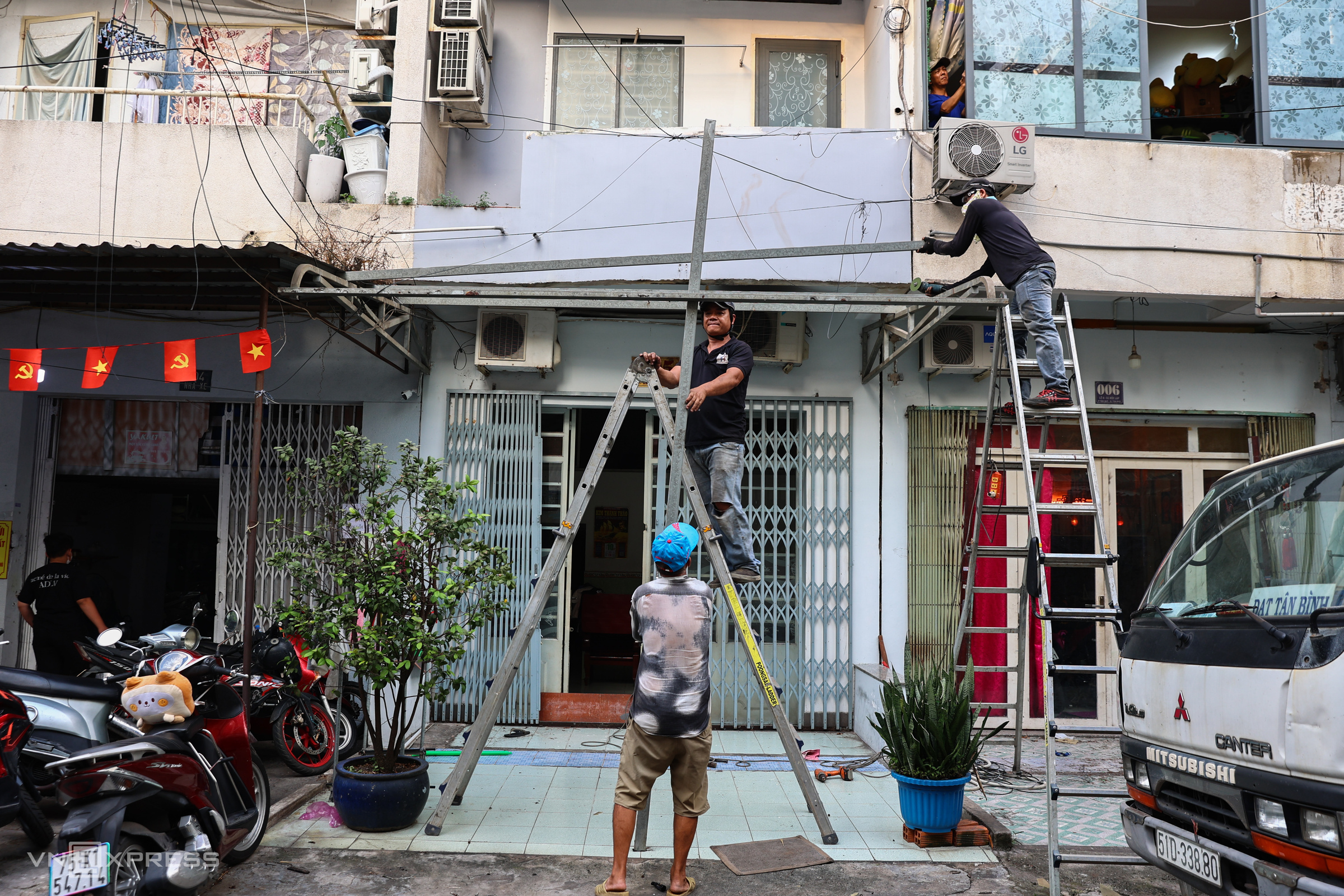 |
Workers climbed onto awnings about 4 meters high to cut the steel frames. According to residents, the ground floor awnings were reinforced to provide protection from sun and rain, and to prevent water from dripping from the upper floors. Photo: Quynh Tran |
On the ground floor, numerous residents were also busy removing awnings and fences, restoring the complex to its original design. Photo: Quynh Tran
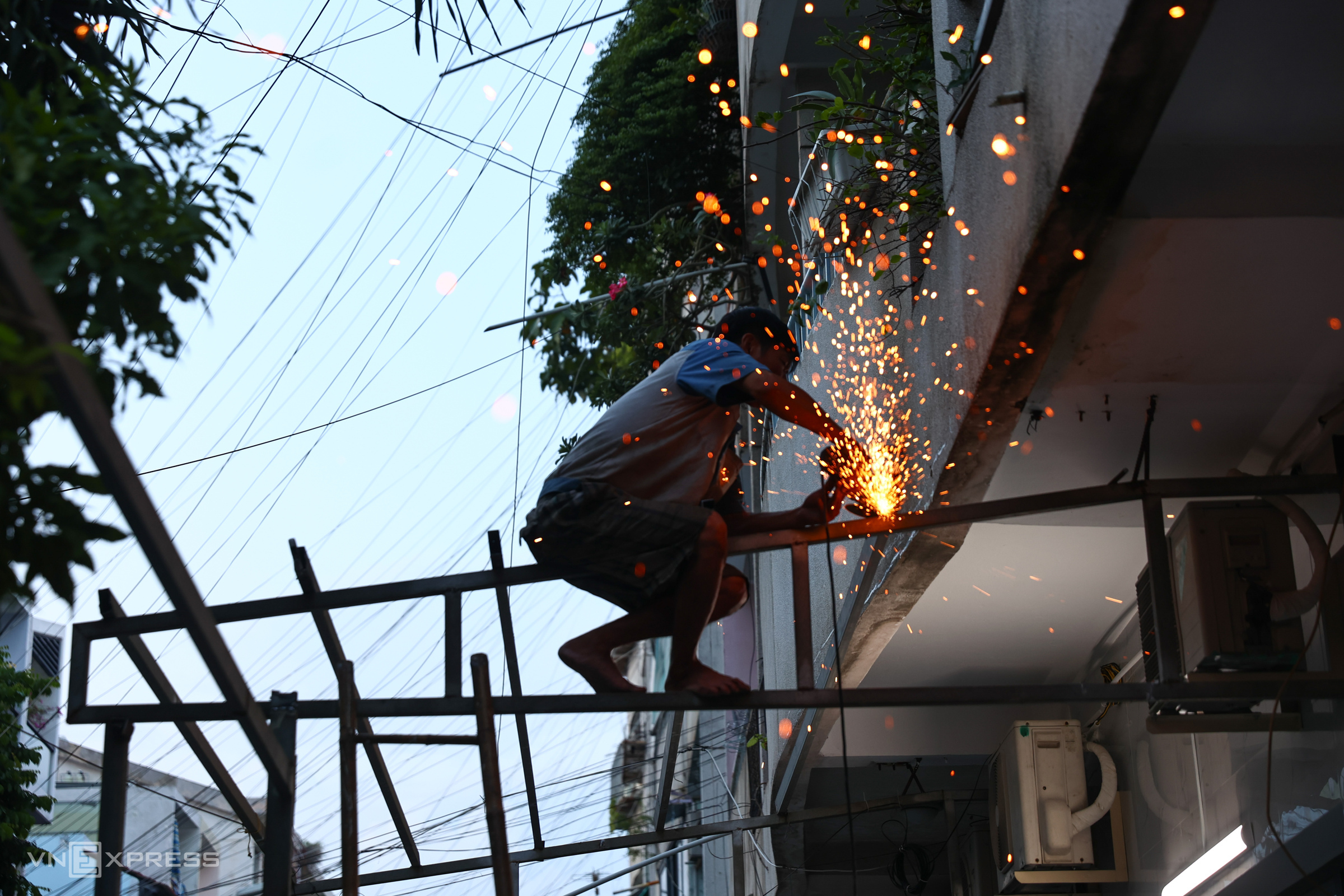 |
Bui Dinh Thin watched workers dismantle the awning of his apartment on the afternoon of 10/7. "I had it installed almost two years ago, but now I'm taking it down for fire safety," Thin said. Photo: Quynh Tran |
Workers climbed onto awnings about 4 meters high to cut the steel frames. According to residents, the ground floor awnings were reinforced to provide protection from sun and rain, and to prevent water from dripping from the upper floors. Photo: Quynh Tran
 |
Scrap metal buyers' vehicles constantly entered and exited the complex. The owner of one scrap yard reported purchasing over a ton of steel from the complex in two days. Photo: Quynh Tran |
Bui Dinh Thin watched workers dismantle the awning of his apartment on the afternoon of 10/7. "I had it installed almost two years ago, but now I'm taking it down for fire safety," Thin said. Photo: Quynh Tran
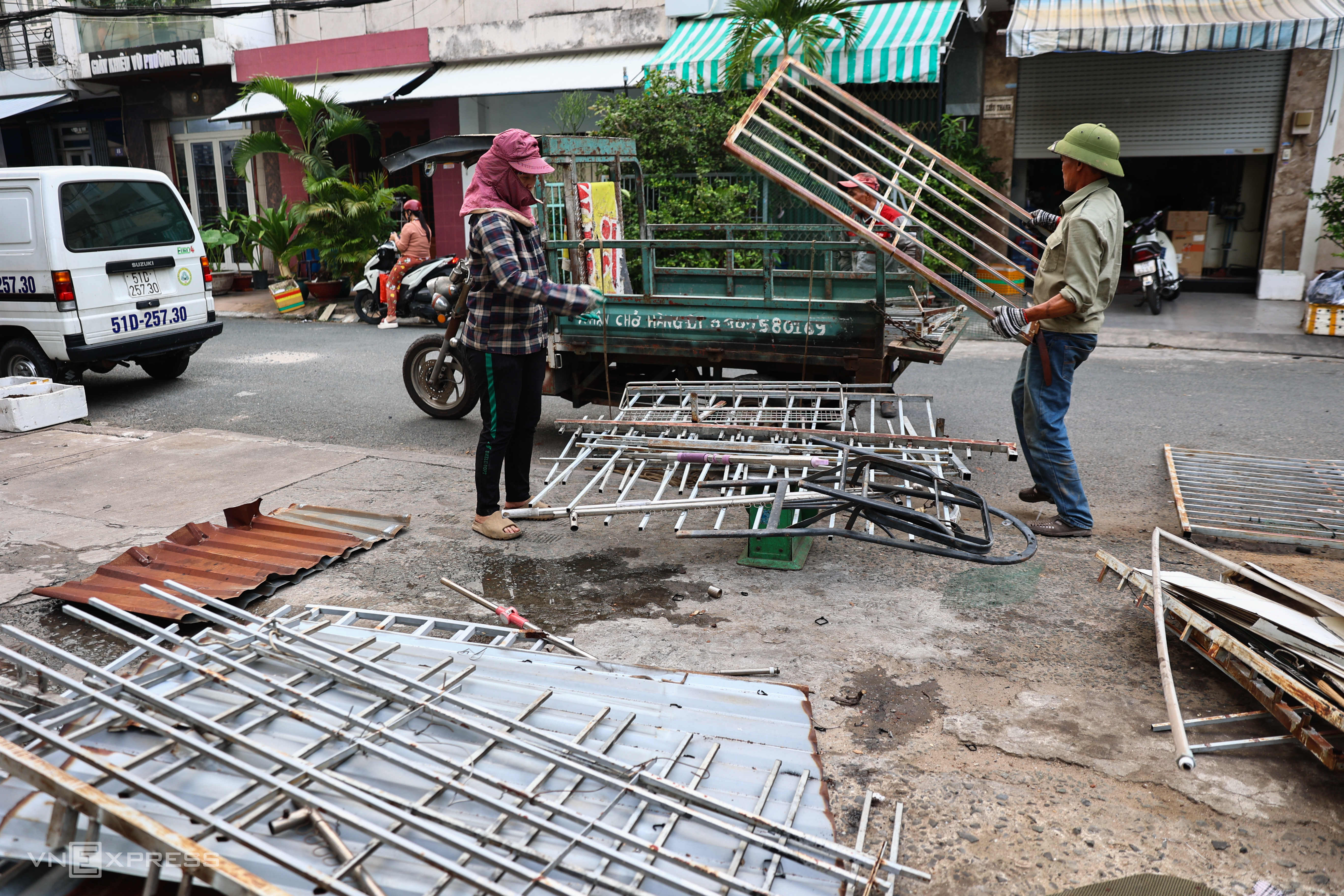 |
A corner of the complex appears more open on the afternoon of 10/7, after the removal of the "tiger cages," compared to the previous day. Photo: Quynh Tran |
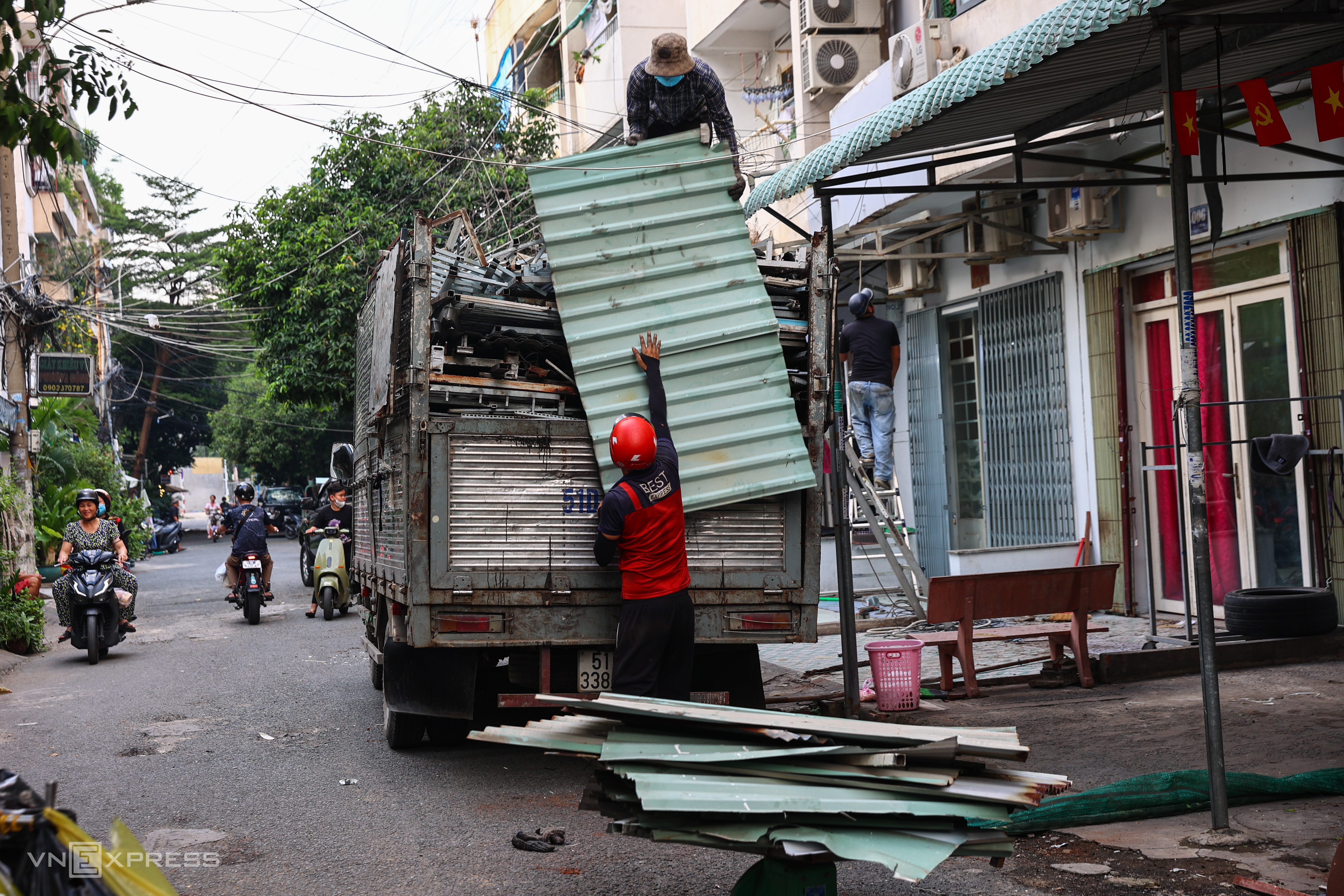 |
By that afternoon, a few apartments still had their metal frames. According to building management, these residents were either busy or away, and would remove them on 11/7. Photo: Quynh Tran |
Scrap metal buyers' vehicles constantly entered and exited the complex. The owner of one scrap yard reported purchasing over a ton of steel from the complex in two days. Photo: Quynh Tran
 |
Location of the Doc Lap apartment complex. Graphics: Khanh Hoang |
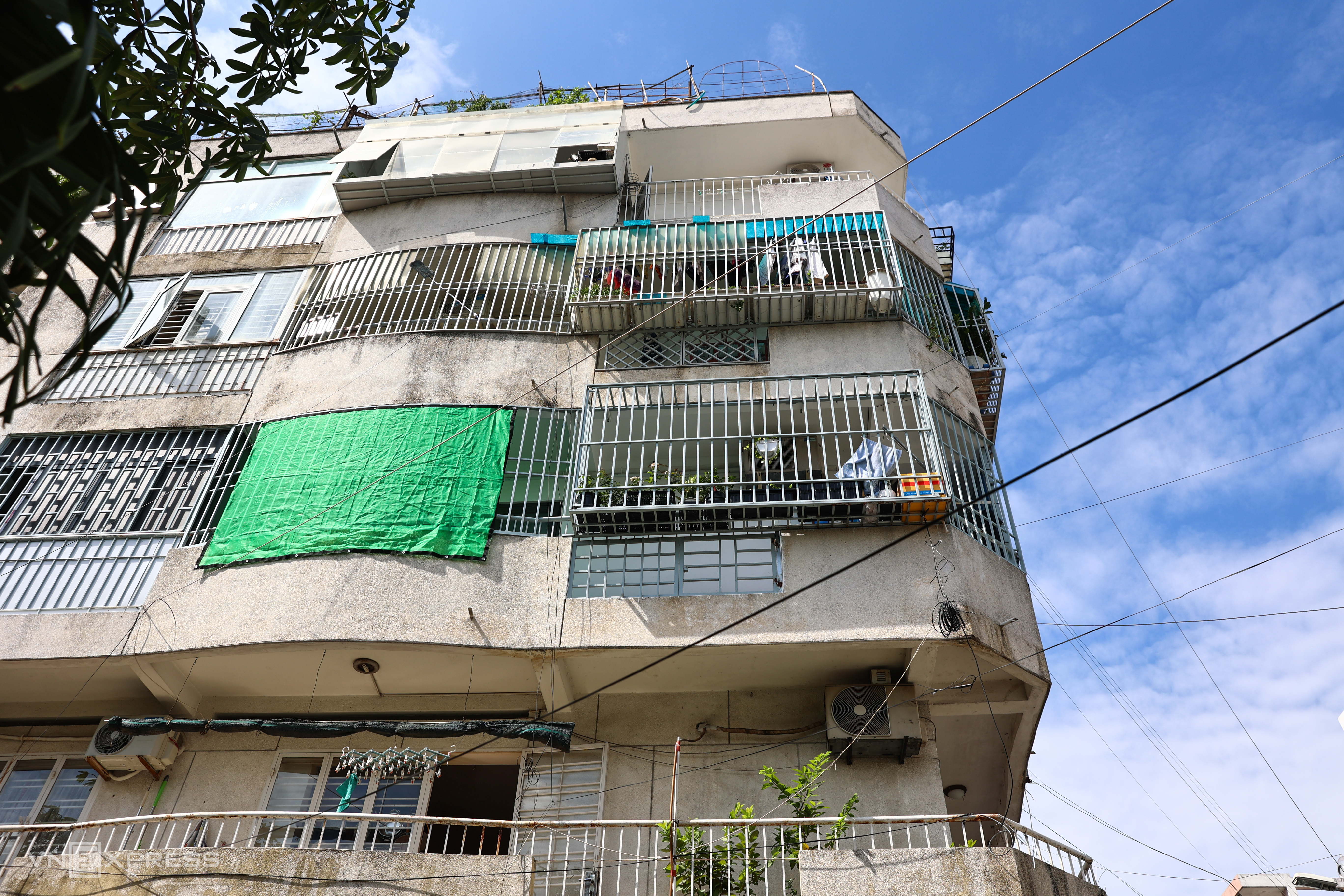 |
A corner of the complex appears more open on the afternoon of 10/7, after the removal of the "tiger cages," compared to the previous day. Photo: Quynh Tran
 |
By that afternoon, a few apartments still had their metal frames. According to building management, these residents were either busy or away, and would remove them on 11/7. Photo: Quynh Tran
 |
An aerial view of the Doc Lap apartment complex, which consists of blocks A and B, with nearly 200 units. At 10 PM on 6/7, a fire broke out in apartment 0.20 of block A, destroying three apartments. The fire intensified, and with the front of two apartments locked, rescue forces lost valuable time breaking the locks to reach the victims.
The fire tragically claimed the lives of eight people from two families who were trapped inside. One family consisted of a couple aged 38 and 40, and their two children aged 7 and 11. The other family included a couple aged 73 and 75, and their two daughters aged 41 and 48. According to Ho Chi Minh City police, the resident of apartment 0.20 had improperly connected the power supply for machinery and equipment on the ground floor, causing a short circuit that ignited the fire.
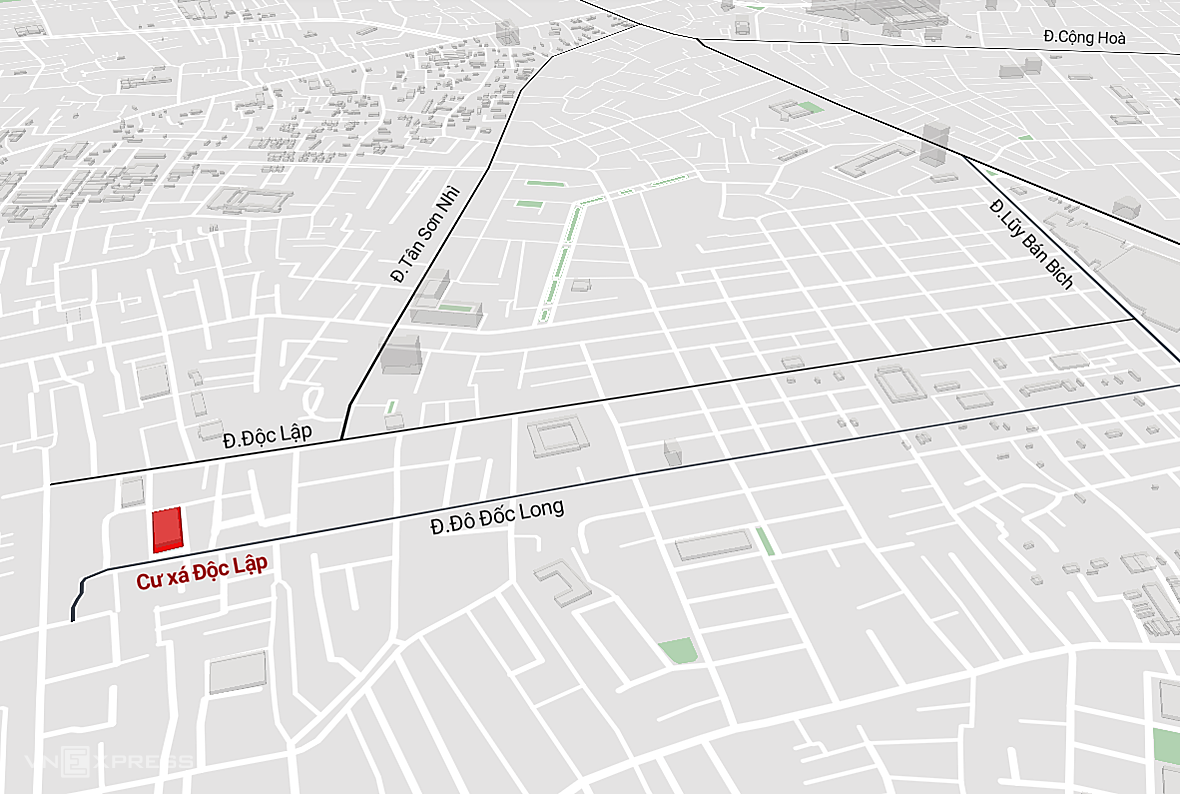 |
Location of the Doc Lap apartment complex. Graphics: Khanh Hoang
Quynh Tran








